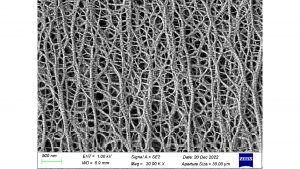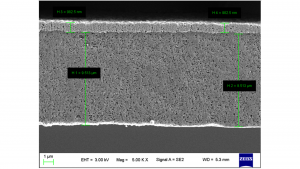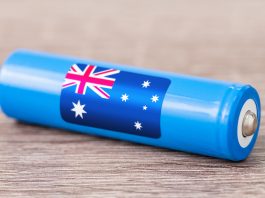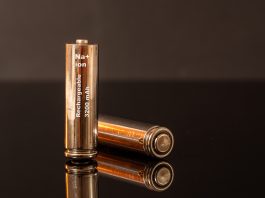Senior Material Europe’s lithium-ion battery separator is the most advanced of its kind and will pave the way for a steady battery supply chain.
Senior Material (Europe) AB is manufacturing a lithium-ion battery (LIB) separator, which plays a very important role in battery safety. Building on its extensive knowledge and experience in battery manufacturing, Senior strives to become a separator expert and support the European battery industry as part of the green transition.
Polyolefin film
In the lithium-ion battery material system, the separator plays an important role, also known as the ‘third electrode’. In today’s separator market, polypropylene (PP) and polyethylene (PE) polyolefin film (Fig. 1) is the most widely used. The polyolefin film process is mature, has a stable production, has high mechanical strength and good mechanical stability, is low cost, and occupies a dominant position in the market. Polyolefin films are developing in the direction of thinness and high performance, such as PP film as thin as nine microns and PE film as thin as four microns developed by Senior. However, although polyolefin films have become mainstream in the commercial sector, they are still unable to meet the stringent requirements of a high-energy-density lithium-ion battery.
One issue is that polyolefin films are made from polymer macromolecules, and there are no oxygen-containing polarity groups on the molecular chain, which have low surface energy, and are naturally hydrophobic. Therefore, the electrolyte wettability of polyolefin films is poor, resulting in lower ionic conductivity.

Another challenge is that the melting point and glass transition temperature of PE and PP are relatively low, which makes polyolefin films prone to thermal shrinkage when heated, resulting in poor thermal safety.
Meanwhile, the uneven pore size distribution and poor affinity for electrolytes of polyolefin films tend to trigger the uneven electrochemical deposition of a lithium-ion battery at the separator/electrode interface and induce the growth of lithium dendrite.

Therefore, the interfacial stability of PP and PE films for lithium-ion battery electrodes still needs to be improved. Several studies have been conducted to propose solutions for the adaptation of polyolefin films within lithium batteries, starting from the perspective of material and structural design. A more common and effective strategy is to apply a layer of functional material on the surface of the film, which is commercially available on a large scale as alumina or boehmite coating.
Senior’s nanofiber solution
For lighter and thinner requirements, Senior has developed a unique nanofiber coating (Fig. 2), which won the first prize of the China Petroleum and Chemical Industry Federation Technology Invention Award. For further enhancement of heat resistance, Senior has an exclusive chemical cross-linking technology. For solid-state battery systems, Senior has developed an ultra-thin electrolyte composite coating. Senior has the most advanced and comprehensive technical strength and reserve in the field of separators that will revolutionise the lithium-ion battery industry.
Please note, this article will also appear in the fourteenth edition of our quarterly publication.









